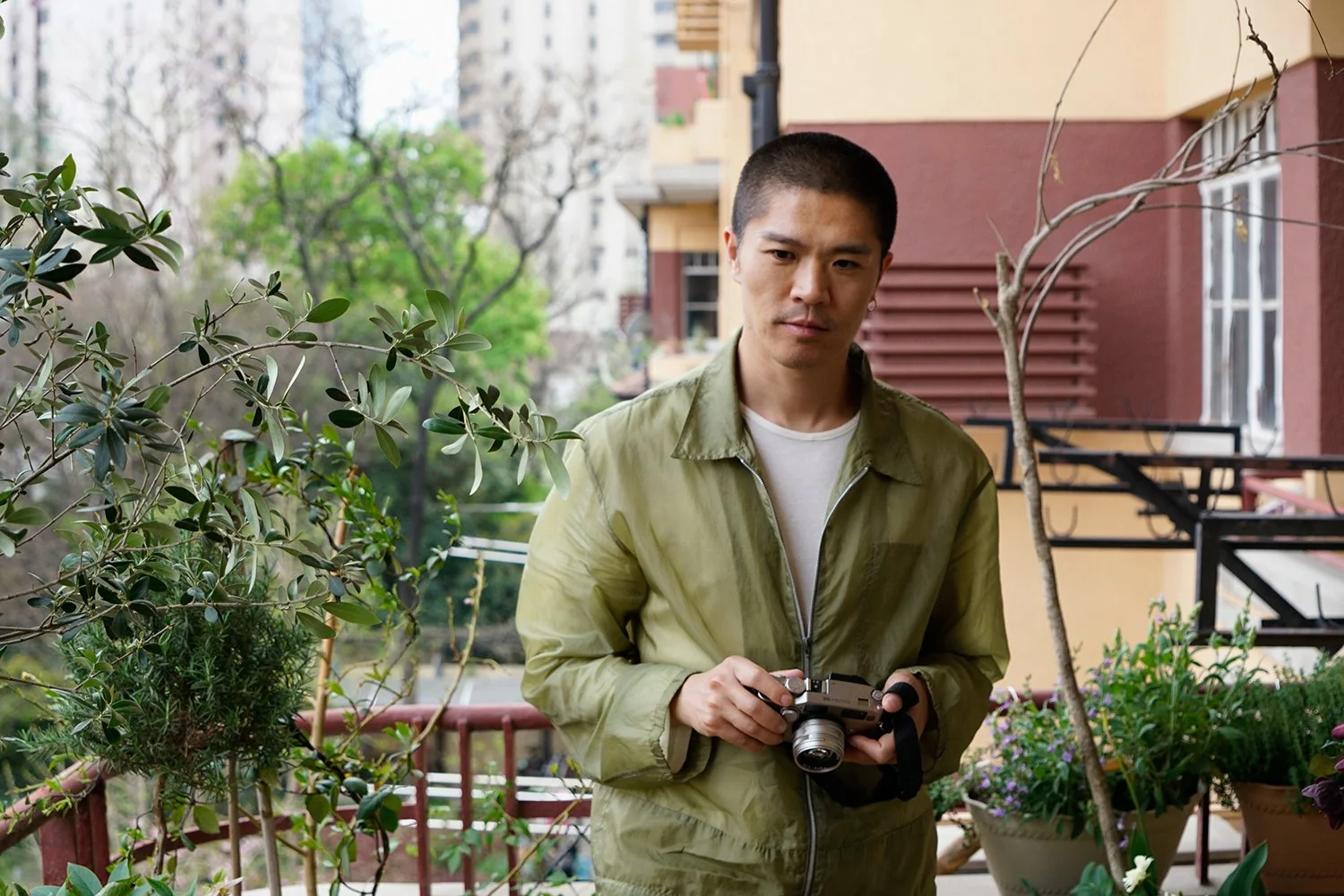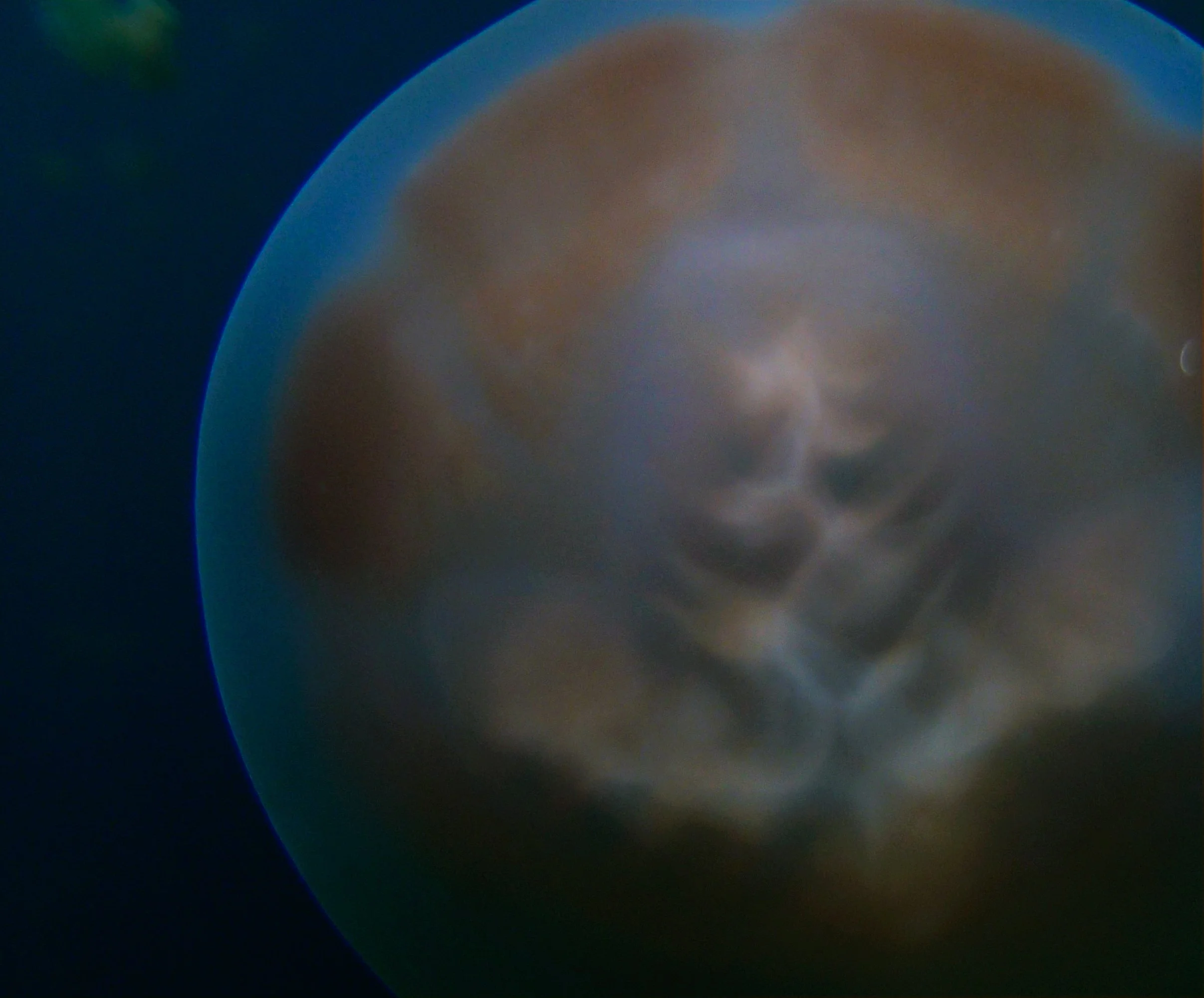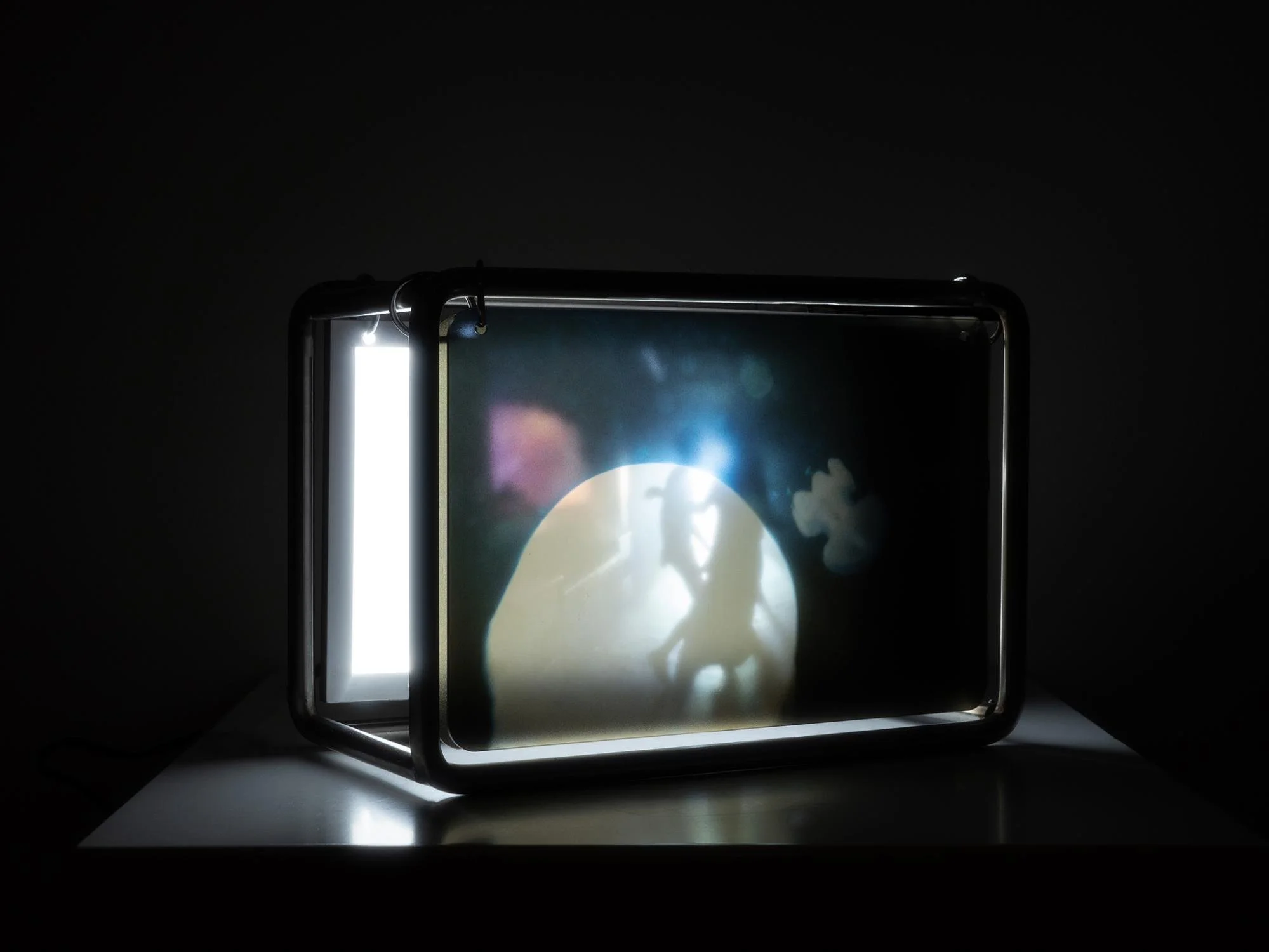SHUWEI LIU
Portrait of Liu Shuwei, by Liu Shukui.
Now living and working in Shanghai, Liu Shuwei uses the medium of photography and moving images as the core of his practice, allowing them to expand into diverse material and installation-based forms. Through carefully constructed narrative frameworks and perceptual rhythms, he explores how the experience of time can be extended—or even altered—through the act of viewing. In recent years, he has held multiple solo exhibitions, including Vanishing Act (Maison Ming, Hong Kong, 2025), Tides, yes, breathing (Festival Photo Saint-Germain, Paris, 2024), and Blue Trilogy (Vu Photo, Quebec, 2017). His works have also been presented at major institutions and platforms such as the Power Station of Art (Shanghai), Rockbund Art Museum (Shanghai), PHmuseum, and the Jimei x Arles International Photo Festival. He has been shortlisted for the Three Shadows Photography Award and the LensCulture Portrait Award.
His works have been featured in the New York Times, i-D, Leap, and Artforum, among other publications.
LUCIJA ŠUTEJ: Looking at my notes…your background's in engineering - which field?
SHUWEI LIU: Yes (laughs). The full name was Material Control and Molding Engineering. Most of my classmates went into jobs making parts - for cars, cameras, things like that.
Actually, I was kind of encouraged into that direction by my family. Back then in China, especially coming from a small place, there was a push towards practical fields - something that would guarantee a job after graduation.
I knew it wasn't really my thing, but I had to listen. At the same time though, I was watching a lot of films and reading constantly, and that's how I developed my passion for photography.
LŠ: A lot of your work draws inspiration from and directly references cinematography with directors like Stanley Kubrick, David Cronenberg. Who were some other early influences for you?
SL: I think one I have to mention is Wim Wenders, especially his work: Paris, Texas and The Sky Above Berlin. The cinematography gave me so much motivation to keep going as a photographer.
I did Visible Darkness#1 with a light box and when I took the original photo, the wall was just plain white. But I kept feeling it should be red, like this was how I saw it in my mind. Only later did I realize that red might have been influenced by Wenders. Playing with palettes really influences my work.
Visible Darkness #1, 2016
Visible Darkness #6, 2016
LŠ: Your work moves in so many disciplines beyond photography - interior design, gardening. How do these connect for you?
SL: Interior design and gardening was never my job, but thank you for noticing my deep interests for those! I do love having multiple interests. (laughs)
Beijing home, 2009-2013
LŠ: We're not insects, we don't have to specialize! (laughs)
SL: The more the merrier. I draw huge inspiration from transforming environments. For a while I was redecorating old apartments. Most of my life I've rented cheap apartments and then had to make them feel like me. This current place is different though - for once, I wanted the architecture to change me rather than me changing it. It is interesting to observe the relationship between how we influence a place and vice versa.
LŠ: Are you currently developing any body of work focused solely on architecture?
Installation view, Liu Shuwei: Tomorrow was ____ archived, Palais de Tokyo, Paris
an almost falling apart house, transferred into a burnt shell.
SL: Funny you should ask—it is actually more about this specific architect. Alexandre Léonard was French but lived in Shanghai for 25 years in the early 20th century, and then just...vanished in 1946. No death certificate, nothing. Some say he jumped from the last building he designed, which happens to be on my street. Others think he was poisoned.
His story got more complicated when I learned his second wife was Russian Jewish, and when the French government collaborated with the Nazis, they took his passport away. He was stuck here for years. Since my series is called Vanishing Act, I've been thinking about making a short film about him. The idea is currently in the early stages.
LŠ: How did you come across his tragic story? I would be interested to hear more of your ideas for the short film.
And are you planning any other series dedicated to architecture?
SL: I was initially attracted by a few buildings as I was passing on the street. Back then I didn't know who the architect was. As I started to research, I realised many friends were living or previously lived in the buildings he designed. I couldn't help but to start reading books about him.
For the short film, I would shoot it on 16mm.
Regarding a series about architecture-maybe yes. But I don't think it would be purely architectural- it could be architecture playing important roles in the series. How it really influences my way of thinking—I guess it’s almost unavoidable for most of us.
In my current exhibition at Palais de Tokyo, I built an archival shelf, like the ones in the library. Inside the shelf, there are structures of architecture and a tree. There is the foundation, the almost invisible staircase, the deep inner connections.
LŠ: And how does gardening fit into your creative practice?
SL: For me, gardening is essential. I cannot think of another field that teaches you the crucial life skills - to really observe and listen. Things might look fine at first glance, but when you look closer, you see what's actually needed. I started when I was eight or nine - my grandmother had this big garden she loved. Then she suddenly became this intensely religious Catholic, which was unusual in China at that time. She'd yell things like "If you don't believe in God, you'll go to hell!" while I was having my sexual awakening.
Recently I made a light box titled “The Garden” layers a night photo of a Beijing garden with a very subtle image from vintage gay porn. When I stepped back, I realized it was connecting all those childhood memories. Let me show you a current work I am developing - it is observing how nature is intertwined into our lives. (shows work)
Liu Shuwei: The Garden, 2025, prints on acrylic sheets, earrings, stainless steel, light panel, 29w x 24h x 10d (cm)
This specific work is all about layering. It is an old photo of a garden I took in Beijing about a couple of years ago (laughs). And the over layers are from vintage gay porn. I wanted to explore how layering could be approached in a subtle way.
I am currently presenting the Vanishing Act at Maison Ming.
Installation view, Liu Shuwei: Vanishing Act, 25w x 17.3h x 12d (cm)
Installation view, Liu Shuwei: Vanishing Act
Liu Shuwei: Vanishing Act, 2018. Photography, inkjet on archival paper, 80 x120cm
Polaroid on bio material. (comment: The artist created the work in the kitchen, transferring the image to the bio material, while the latter was melting, posing a risk to disappear at any second.)
LŠ: The layering adds an incredible dimension to the work. Are you interested in exploring the technique of layering in different formats? What opportunities does layering carry for you and how does it help structure narratives for you?
SL: Layering expands the space. Beyond overlapping, I also tried to layer actual shadows, and pure “projected” color. So the content of the work goes both ways, getting closer to our eyes and further away from us. I think it’s in a way how I deconstruct photography, by thinking in an architectural way.
Liu Shuwei: Drawer of Light#1 Another Dancer, prints on acrylic sheets, earrings, stainless steel, light panel, 25w x 17.3h x 12d (cm)
Liu Shuwei: Drawer of Light #2, The Cave of Swimmers, 2025, prints on acrylic sheets, earrings, stainless steel, light panel, 25w x 17.3h x 12d (cm)
Installation view, “Here is Where We Meet, 2025” in the group show “On Set”, Nan Ke Gallery, Shanghai
LŠ: These installations feel like a completely new direction.
SL: Yes! The research comes from an exhibition made for the group show “Closer” at Jenxuan Gallery dedicated to intimacy. In a way it's an evolution from the Drawers of light , which were smaller in scale but exploring similar ideas. I like playing with the notions of distance and how you approach a piece and oneself.
For me it is interesting to explore new ways of working.
For example, during rainy seasons in Shanghai, I can stay alone for weeks, without seeing anyone. Entering my own little work - specifically gardening, I am growing my own flowers (shows black tulips). But I realised that all these worlds lead to then being more open to the surroundings. I feel the same with my work in fashion. Leaving aside the glamour and the fast pace of the industry - there is poetry in finding ways to tell a story or a concept within a frame of one day. It forces us to go to the very basics. I cannot think of better ways to grow.
Black poppy.
LŠ: I agree. I feel mesmerised by your trilogy series and the first one dedicated to Blue.
SL: Blue was one of my first serious series. At the time, I was escaping the fashion world after an unpleasant experience. I isolated myself and I noticed moon-shaped floaters in my vision. I feared going blind— and even fantasized about losing sight, what would it mean? Here, Derek Jarman’s work really inspired me. I do not know if you know but blue was the last color he saw before blindness. Over days and days, I imagined a blue world: blurry, uncertain.
I even painted my ceiling blue and then traveled to Guizhou, which is a home to minority groups and a unique approach to indigo dyeing. I think that trip really birthed the two series: Into the Blue and Visible Darkness (that really activated fantasy). Guizhou was inspirational and even the blue mountains there felt primal—only later, I realized they resembled seabeds. Actually because some of my friends even found fossils — proving they were once underwater.
Image courtesy of the artist.
Looking back on the whole trip and the series - Susan Sontag was right on how creating art can isolate you, but completing it returns you to a richer reality.
LŠ: Could we dive deeper into the trilogy through Visible Darkness and the research process behind it?
SL: For me it is the evolution of my indigo dying and colour research. The experience with eye floaters really made me ask: If I go blind, will blue be the last color I see? But somehow it felt calm as I envisioned a blue world of uncertainty but of mystery.
I later read that many artists get them - maybe we overuse our eyes. (laughs)
Installation view, Liu Shuwei: Tomorrow was ____ archived, Palais de Tokyo, Paris
LŠ: Do you plan to expand the series to other colours? I would be interested to hear of your own research into the identity of colours.
SL: To be honest, I’m obsessed with colors. Early on, I only loved blue, white, black, and of course red for their emotional intensity. (Laughs) I hated beige, olive green. But after the process and experience of creating Blue, I gradually accepted them. And now I love olive green—I even have an olive tree.
Circling back to my gardening - my colour palette emerges from my garden. My balcony peaked between late February and early March. But it was a pure black garden (laughs). The garden was blooming with black orchids, tulips and poppies. For me black poppies are magical because their petals last one day in sun and three in shade. Chinese has a phrase: So red it’s purple, so purple it’s black. So for the new series - who knows.
I recently finished a video work related to Red and Black, which is shown at Palais de Tokyo from Sep 29th. The video piece is very much about the different sides of ourselves—--quarrels, conflicts, violences, love and co-existence through time.
LŠ: I was wondering, are you considering shooting your own full feature film? The topics we just covered would be an amazing basis for either a documentary or a feature film.
SL: Oh yes ! As it was films who taught me photography, and doing short films and videos really felt like a return. For me most of the 16mm videos I've done so far, also serve as practice for me approaching to do a feature film.
Image courtesy of the artist.


















